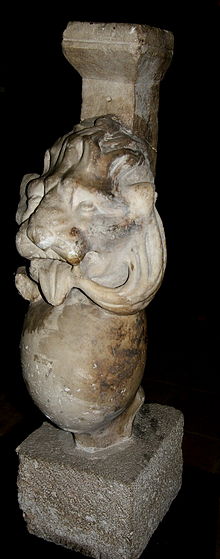Here is some fragmental attempt to introduce yet another "
gappeee", an individualized expression for the inconsistency and odd contradictions [and|or documentation] during progress and development of an object in history; here with another example as in black and white- vs. color television standards worldwide. A conclusion on all this would allow that
both WW1 and WW2, plus the follow up "Cold War" must have been the hub for something completely different as told ;
1920++Cinema Movies|Films are shot around the world with 24 frames per second, which did oppose either a PAL or NTSC standard, therefore there was a clear conversion Issue.
The corresponding physicists worldwide, which developed the TV Standards, must have been aware of this logical problem.
It results in a problem when such films should be shown on television. While you can play faster
with PAL (25 frames per second), the movie has to
sped up only 4%, which is not very noticeable, instead if you would use a NTSC system (30 frames per second) one has to playback the movie 25% faster, what would it make very significant and irritating for the eye of the watcher.
Instead, in the U.S. 4 images each 5 images had been converted, using the so called 3:2 pulldown telecine-conversion method. One of the official reasons however why the so called NTSC system was introduced, was the U.S. standard AC power system, with exactly 60 Hz.
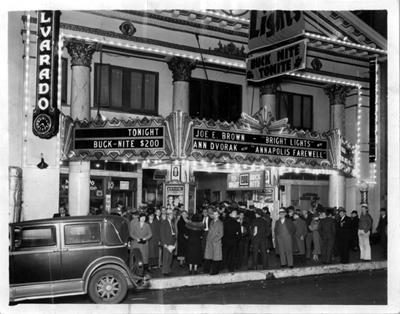 1936
1936The Radio Manufacturers Association (RMA) (german: Verband der Radiohersteller) , suggests a system with 441 frames|"Zeilen".
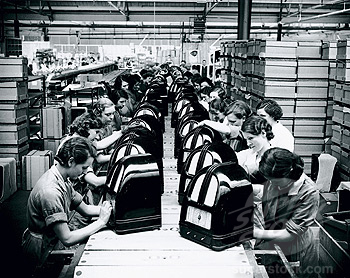 1940
1940The national "Fernsehsystemkomitee" with the assistance of the Federal Communications Commission (FCC) (german: Bundeskommunikationsbehörde) is created, to solve a conflict between television companies regarding television standards.
March 1941 The commitee is releasing a technical Standard for schwarz-weißes Fernsehen|black and white TV.
1950 Suddenly yet another 'contradictive' TV Standard is introduced.
Developed by Columbia Broadcasting Inc. (CBS), the former Schwarzweiß-Standard|black and white standard was oddly *again incompatible.
The Zeilenanzahl|number of lines had been reduced from 525 to 405.
Destroyed Evidence of an illogical official chronology regarding introduced Standards ? :Most of until then developed Television-Products had been officially destroyed, today only 2 sets [museum or location unknown] do exist, which would prove an inconsistency of a worldwide tv standards development.
Members of the tv system committee urged to introduce NTSC, meanwhile with "Abwärtskompatibilität"|downgrade compability, regarding the former black and white tv standard.
March 1954First NTSC-Color Camera: RCA TK-40AIn Europe NTSC gets [logically?] still ignored; standards SECAM and PAL are getting introduced.
1956Flashback or another Inconsistency ? Ignoring the NTSC standard, ?Séquentiel couleur à mémoire? aka (SECAM or SÉCAM ) is developed and introduced by french Henri Georges de France.
However also already during Dezember 1931, deFrance established Compagnie Générale de Télévision in Le Havre and produced a functional 60-frame-television standard.
After 1936 deFrance furthermore did already experiment with 405 frames|"Zeilen"on a 21 x 24 [cm] Big tv screen, which turned into the pre WW2 standard with 455 frames|"Zeilen".
During WW2, August 1942, he produced a TV System with 767 frames|"Zeilen".
Ironically Henri de France worked during the whole time also on Radar Technology.
https://de.wikipedia.org/wiki/Henri_de_FrancePretty unknown or ignored is however that, with the assistance of Adolf Slaby and Georg Graf von Arco, at AEG (Allgemeine Elektricitäts-Gesellschaft) for the "Kaiserliche Marine, they developed "drahtlose Nachrichtenübermittlung (Funkentelegrafie)|wireless television standards, also for "RADIO"; yet another team under Karl Ferdinand Braun at Siemens & Halske worked on this for the german army|"Deutsche Heer".
Nothing of all this was known in the U.S. ? This appears frankly said, more than just odd.
See also "Zeilensprungverfahren :
https://de.wikipedia.org/wiki/Zeilensprungverfahren 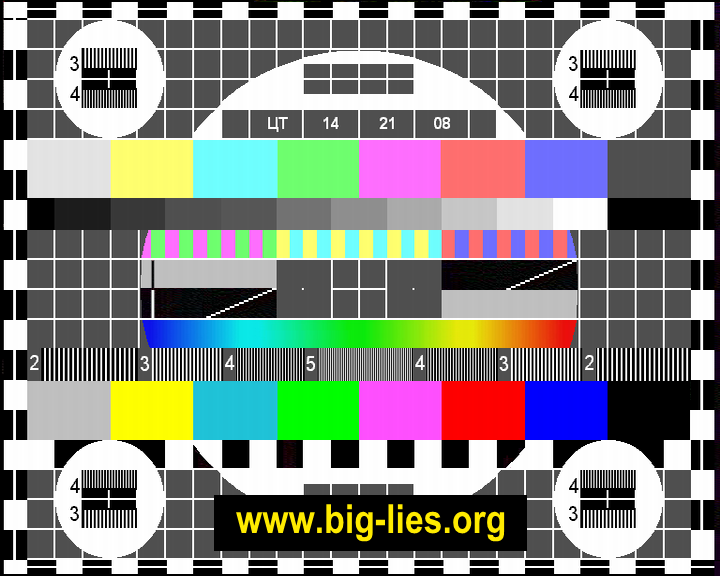 Why are there so many discrepancies during the development of color-television format ?1960++
Why are there so many discrepancies during the development of color-television format ?1960++PAL aka "?Phase Alternating Line"? was developed by Walter Bruch at Telefunken GmbH in Hannover.
Bruch was already in charge as a camera man
during the 1936 Olympic Games in Berlin.
In the 30s he developed the so called „Volksfernsehempfänger“ with a self-built film scanner|Filmabtaster, already for Telefunken.
He also was in charge of the TV Station at the german "space rocket" program [Fernsehanlage zur Überwachung der V2-Starts in Peenemünde'.
In 1946 he formulated a 625-frame|Zeilen-TV Standard.

Walter Bruch - the "grandfather of PAL", here -behind the camera!- during the 1930s at the Olympic Games
Consider also this :
[from "occupyBeyonce"]
"…Columbia Broadcasting Inc. (CBS), NASA, Radio Manufacturers Association (RMA, ~1936 ; during 1940 embedded by the FCC into the Electronic Industries Alliance), SECAM (the french Séquentiel couleur à mémoire [tv-] system aka „Sequenzielle Farbe/color mit Speicher“), Henri Georges de France (the developer of SECAM), Thomson SA [now Technicolor SA, who owns the SECAM rights, but originally was the Edison General Electric Company to become the General Electric Company in 1892, which should make u think ;], then there was a technical, so called Signal-Rausch-Verhältnis -principle and 'germany/telefunken' ;
Then there was also JVC, which was founded in 1927 as "The Victor Talking Machine Company of Japan, Limited,"
a subsidiary of the U.S.' leading phonograph and record company, the Victor Talking Machine Company.
In 1929 majority ownership was transferred to RCA-Victor.
In the 1930s JVC produced "phonographs and records".
In 1932 JVC started producing radios and in 1939 Japan had their first television.
Odd what all happened 'in between', since officially there was something called 'worldwar 2', pearlHarbor or so and in the 00's there was and still *is* 'warOnTerror' ; more bizarre was that ('socialism') east german television was completely compatible/upgradeable with the PAL system ;
Maybe you get a better idea by considering the historical 'fact', that french Charles de Gaulle had a perfect relationship with former soviet union- 'CEO' Nikita Chruschtschow , SECAM/PAL-Decoders had been pretty much available after a while in east germany which was mostly advanced in the development of chemical laser weapons in Jena, though still 'surrounded by a wall' ; ..."
What was the *real history of television, communication and radar ?
Another flashback:
Already officially in 1794, a semaphore telegraph system was invented by Claude Chappe for the French military.
This system was visual and a semaphore was used, a flag-based alphabet.
Sweden then introduced an optical semaphore network.
In Canada, the first semaphore line in North America was officially in operation by 1800.
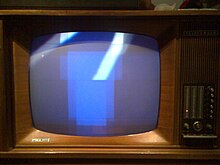
"First" official PAL color TV in 1967. Why so late ? Also, during 1945, U.S. occupation groups took over the office TELEFUNKEN, established *there in 1949 their U.S.-Main Base, which they didn't leave until 1994! („Mc-Nair-Barracks“).
In 1801, the Danish post office installed a semaphore line across the Great Belt strait, Storebæltstelegrafen, between the islands Funen and Zealand with stations at Nyborg on Funen, on the small island Sprogø in the middle of the strait, and at Korsør on Zealand. It was in use until 1865. Prussia and Russia introduced a related system.
The semaphores were successful enough that Samuel Morse failed to sell the electrical telegraph to the French government.
https://forum.axishistory.com/viewtopic. ... &p=1639775
Experiments with a transatlantic telegraph cable began in 1857 and 1858, but allegedly "failed" after only a few days or weeks.
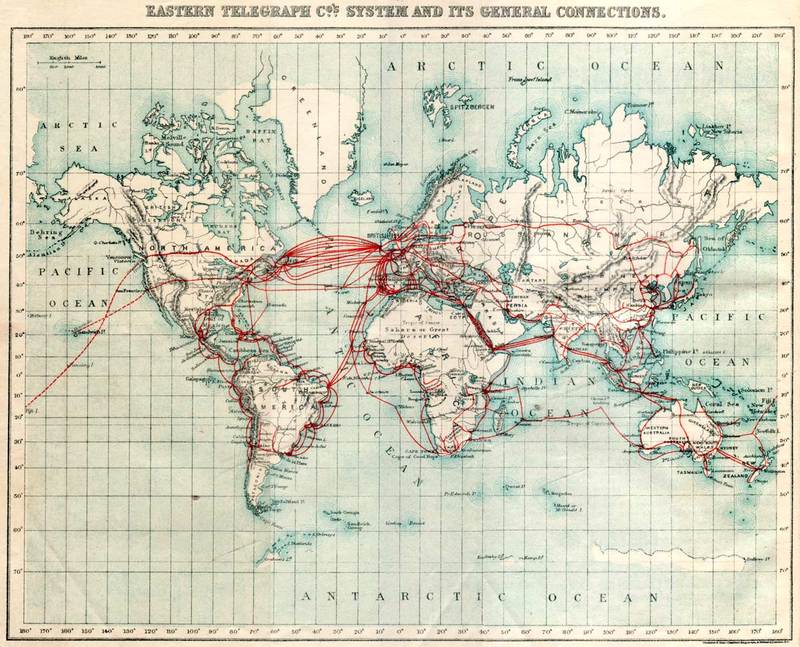
A world map of 1901 shows a professional undersea cable network between the U.S. and Europe. Why would a world war make any sense other than about communication- and television standards ?
Also was the so called "American Civil War" (1861–65), nothing other than a falseflag test for a wide use of the electric telegraph ?
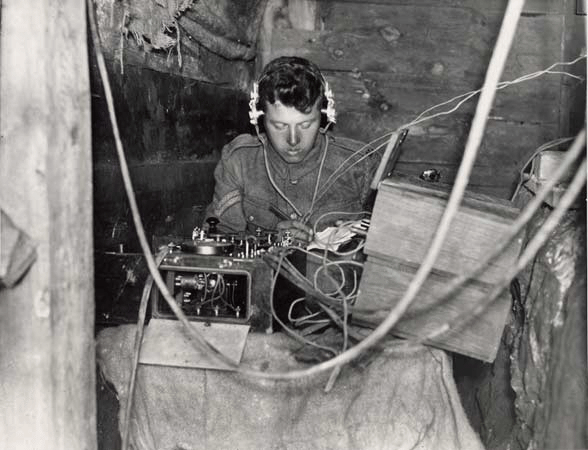
Marconi Trench Set during WW 1
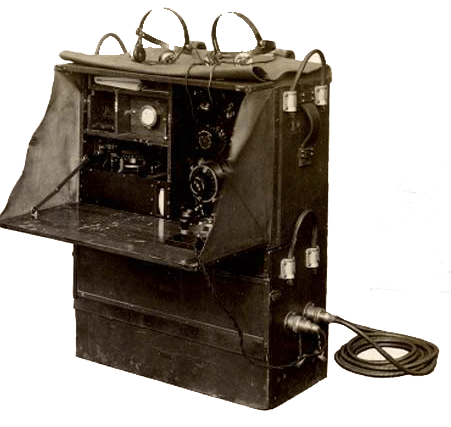
1910's/20s Marconi Wireless Pack Set
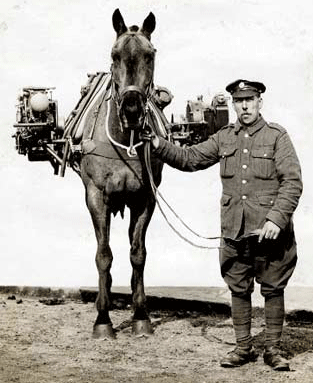
…even for horses ;
Interestingly also during the 1910s, but underreported, there was a "Communications Section of the Finnish 27th Jaeger Battalion" of the WWI German Army.
These Jaegers returned to Finland in February 1918 and formed the Jaeger Kenttälennätinpataljoona (Field Telegraph Battalion) to meet the War needs.
Initially, a significant part of their activities consisted of a very sophisticated established Field Telegraph stations (Kenttälennätinasemat) and they were running cables to connect field telephones.
If Finland was *that advanced, some incompetence regarding ongoing television- and related format doesn't make any logical sense any longer.
see also https://personal.inet.fi/koti/antero.tan ... ulukko.htm
What was the *real reason for WW 1 and WW2?
Which format did really come first?
NTSC, PAL or SECAM or was it PAL all along, then ["biz-politically"] delayed, to finish up specific themes, plots and scripted traumas for WW2 ? Or "more" ? What was already known about Video Recording Systems during WW2 ?
Why did SONY|Japan produce UMATIC [first worldwide video recording system] and not the U.S. ? Why was *this system then used for the official broadcast and recording of the so called "Moon Landing program" ['69] ? Why then after that was UMATIC delayed for an introduction in the U.S. until 1971?
Again, back to the 3:2 pull down complexity which must have been known among physicians and technicians already since the early 1900s and 10's.
"Telecin" is the process of transferring motion picture film into video and is performed in a color suite.
The term is also used to refer to the equipment used in the post-production process.
Here a simplistic summary {please bare with me and my english}:
A difference in frame rates between film (generally 24 frames/s) and television (30 or 25 frames/s) means that logically "playing a film into a television camera would result in flickering when the film frame is changed in mid-field of the TV frame.
Color was supported by using a multi-tube video camera, prisms, and filters to separate the original color signal and feed the red, green and blue to individual tubes.
However, this still left a film shot with cinema frame rates as a problem.
A more convincing technique would have been and has been the use of a "2:3 pulldown", which turns every second frame of the film into three fields of video, which results in a much smoother display.
Therefore logically the idea of something like PAL would have made more sense during the early development of [color-] television. PAL uses a similar system, the so called "2:2 pulldown". It's still used in 2012, as far as i know.
SECAM was *also developed by Russia. Some tech-historians give a hint:
The french acronym of SECAM *actually DID mean: „System Even Crueler (than the) American Method“
https://en.wikipedia.org/wiki/SECAM#History
Why did NTSC officially came instead "first"?
In countries that use the PAL or SECAM video standards, film destined for television are photographed at 25 frames per second. The PAL video standard broadcasts at 25 frames per second, so the transfer from film to video is much simpler; for every film frame, one video frame is captured.
Though the "first NTSC standard" was developed in 1941 and had no provision for color television, it took oddly until 1953, when a second modified version of the NTSC standard was adopted, which then allowed color television broadcasting compatible with the existing stock of black-and-white receivers.
And what was the role of "east german television" ?
Was the black and white standard additionally some mindOP, to let socialism feel more 'dark' but "realistic", compared with the "colorized imperialistic west and U.S. view" ? Still something doesn't add up, since the former east "regime" allowed silently specific converters, officially smuggled into former east germany aka "DDR".
And everyone watched WEST Television *secretly anyway. Once they had an opportunity, to "upgrade" their TV set, without the knowledge of east socialistic government, though they *must have known this, with the help of their STASI|Ministry for State Security|Staatssicherheit, literally State Security, maybe an early pendant of google meets GPS ;
see https://en.wikipedia.org/wiki/STASI
Conclusion : History is a hoax, first in black and white, then also in color. A never ending cover-up of advanced hiTek, hiding behind endless anxietyOPs, bogus Wars, false-flags and pseudo-racistical "reasoning" ;
And the real radar- and telecommunication history has yet to be told as well ... ;



